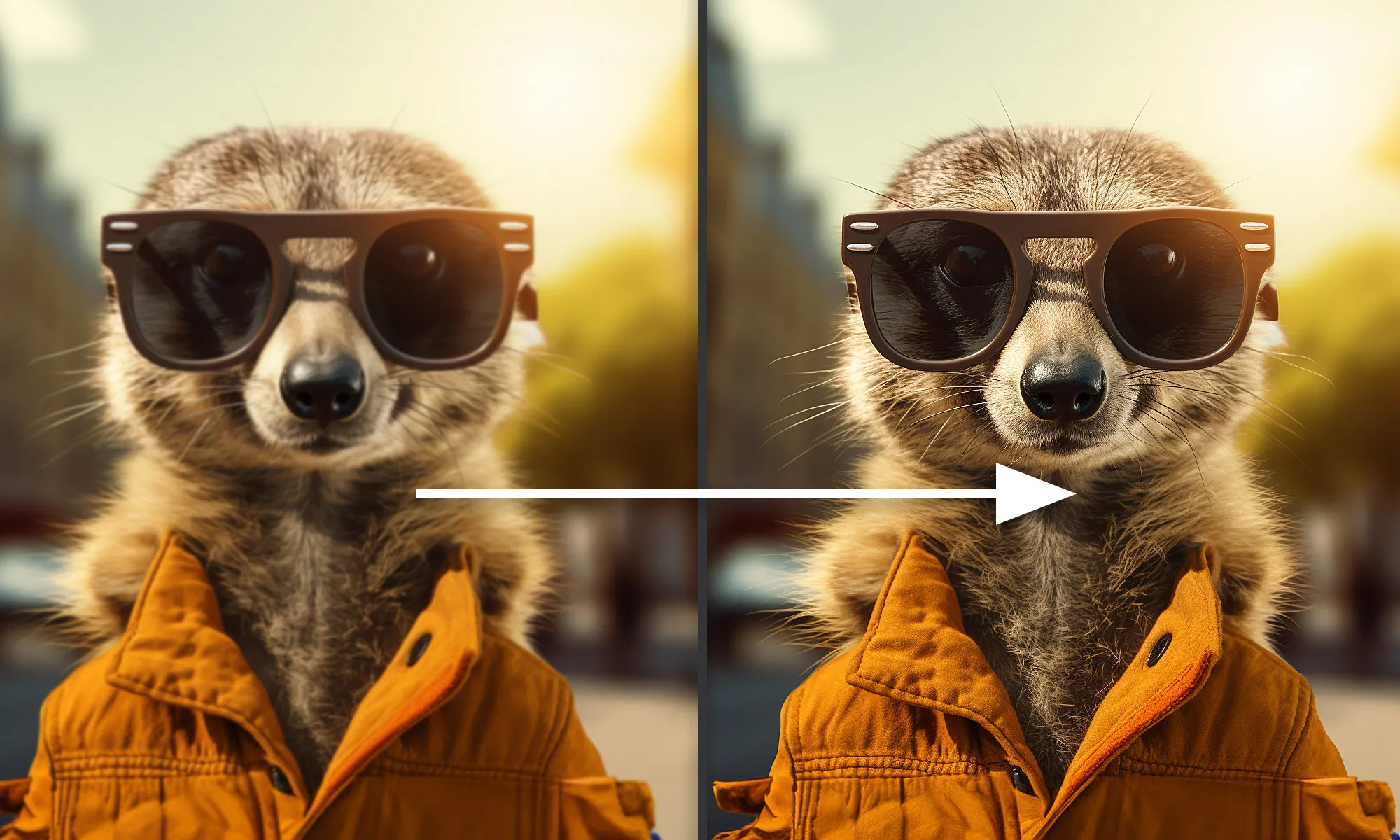The sharpness of an image can have a big impact on its effect. However, pixelated or blurry photos can be a big problem, especially when it comes to important memories or professional shots. Luckily, there are a variety of methods and tools available today to sharpen images and give them more clarity and detail, because nothing is worse than a photo being blurry . Some of these methods use AI technologies, while others are based on traditional image editing techniques.
In this article, I will give an overview of the different image sharpening methods, including those that use AI technologies and those that do not. I'll also look at the basics of image sharpening and compare the pros and cons of the different methods. Whether you're an amateur or a professional, this article will help you make your images sharper and more impressive. Let's get started!
Table of contents
Sharpening tools at a glance
| Name | Positive | Negative | Costs |
| Topaz Photo AI | 1st place: Best result (but best here because noise is also removed) | Not quite cheap. Unfortunately no possibility to quickly sharpen an image online. | 199 $ |
| Topaz Sharpen | 2nd place: Best result when it comes purely to noise removal (otherwise I like Topaz Photo AI best in the overall package) | Unfortunately no possibility to quickly sharpen an image online. | 79,99 $ |
| MyEdit | 3rd place in my recommendations. | Rather expensive in the long run if you want to sharpen a lot of images. | 1 image per day for free, otherwise 10 - 16 € per month |
| DxO PureRAW 3 | 4th place in my recommendations (if RAW photos) | Only RAW photos can be edited. Unfortunately no option to quickly sharpen an image online. | 129 € |
| Nik Sharpener | For print sharpening old but proven according to Olaf Giermann A major update was released a few weeks ago, where the interface was completely revised. | I would like more AI support. Unfortunately no possibility to quickly sharpen an image online. | 149 € |
| Luminar NEO | Quite good, especially face! | Unfortunately no option to quickly sharpen an image online. | 9.95 per month or € 99.95 for the full version. |
| AI Upscale | The result is quite convincing. Offers both a program and at the same time the ability to quickly edit the image on the website. | No RAW photo support. | from approx. 40 $ per month or one-off 129.9 $ |
| https://neural.love/ | Results quite good (especially face) | Rather expensive in the long run if you want to sharpen a lot of images. | from 10 € per month |
| Remini app + on the web at https://app.remini.ai/ | Result quite good + brightness is also optimized at the same time. But usually only works well on faces. According to Olaf Giermann: the face reconstruction top dog | Rather expensive in the long run if you want to sharpen a lot of images. | 7 days free, otherwise approx. €10 per week or €74.99 per year in the Pro version |
| Adobe Photoshop | AI support (only noise removal for RAW images: but very good there) | Result unfortunately only mediocre. | from approx. 10 € per month |
| Adobe Lightroom | AI support (only noise removal for RAW images: but very good) | Result unfortunately only mediocre. | from approx. 10 € per month |
| PicWish AI Photo | Can be used immediately online without installing a program. | Result unfortunately only mediocre. | 10 cents per picture or less if you buy a lot of credits. |
| https://www.hitpaw.com/ | Only face very good, rest remains blurred | Rather expensive in the long run if you want to sharpen a lot of pictures. | 17.99 $ per month (annual 79.99 $ or one-time 99.99 $) |
| On1 NoNoise AI | Very good at denoising. | Sharpening only with more noise (but can be combined) | 67,78 € |
| Upscale Images to 8X Online [Media.io] | Can be used immediately online without installing a program. | Result unfortunately only mediocre. | 9.99 $ per month or credits approx. 1 credit 0.5 $ to 0.05 $ |
| Cutout.Pro | Can be used online immediately without installing a program. | Result unfortunately only mediocre. | 5 credits free, then 10 - 5 cents approx. one credit in the subscription or 1 euro to 10 cents as direct payment |
| Raw Photo Editor | A nice website that describes the program very well. | Result unfortunately only mediocre. | 78.90 € on offer, otherwise 112.72 € |
| App Snapseed | Fast results with just a few touches. | Result unfortunately only mediocre | free of charge |
| Pixlr | Can be used immediately online without installing a program. | Result unfortunately only mediocre. | 4.90 $ per month |
| https://www.fotor.com/ | Can be used online immediately without installing a program. | Result unfortunately only mediocre. | 6 $ per month |
| https://ai.smartmine.net/service/computer-vision/image-deblurring | Can be used online immediately without installing a program. | Result unfortunately only mediocre. | 100 credits per month free of charge, otherwise 500 credits 4.99 $ |
| https://imglarger.com/Sharpene | Can be used online immediately without installing a program. | Result unfortunately only mediocre. | 9 $ per month |
| https://fixelalgorithms.co/products/detailizer3/TZ | (Unfortunately I was not able to test it). | No trial version to download and no possibility to try it online. | 46 € |
| Enhance-X from Samsung | (Unfortunately I could not test it.) | Only for Samsung cell phones |
Sharpen images: Basics
What does 'image sharpening' mean?
Image sharpening refers to the process of enhancing an image by making it clearer and sharper. This can be achieved through various techniques and programs, including the use of AI technology. Sharpening an image involves emphasizing the edges and details in the image to create a sharper and clearer image.
Reasons for pixelated, blurry photos
There are many reasons why photos can be pixelated or blurred. One reason may be that the photo was taken from a poor perspective, resulting in a blurred image. Another reason may be that the picture was taken in poor lighting conditions, resulting in a low-quality image. Using a poor camera or enlarging an image can also lead to a deterioration in quality.
Another cause of pixelated or blurred photos can be the compression of the image. If an image is compressed too often to save storage space, this can cause the image to become pixelated or blurred. It is therefore important to save the image in a sufficiently high resolution to ensure good quality.
Overall, sharpening images is an important technique to improve pixelated or blurry photos. By using different techniques and programs, images can be made sharper and clearer to achieve better image quality.
Methods for image sharpening without AI
There are various methods for sharpening images without using artificial intelligence. Two methods are presented in this section: the use of image editing software and the use of online tools.
Using image editing software
One way to sharpen images is to use image editing software such as Photoshop or Lightroom. These programs offer various tools to optimize images, including the ability to sharpen images.
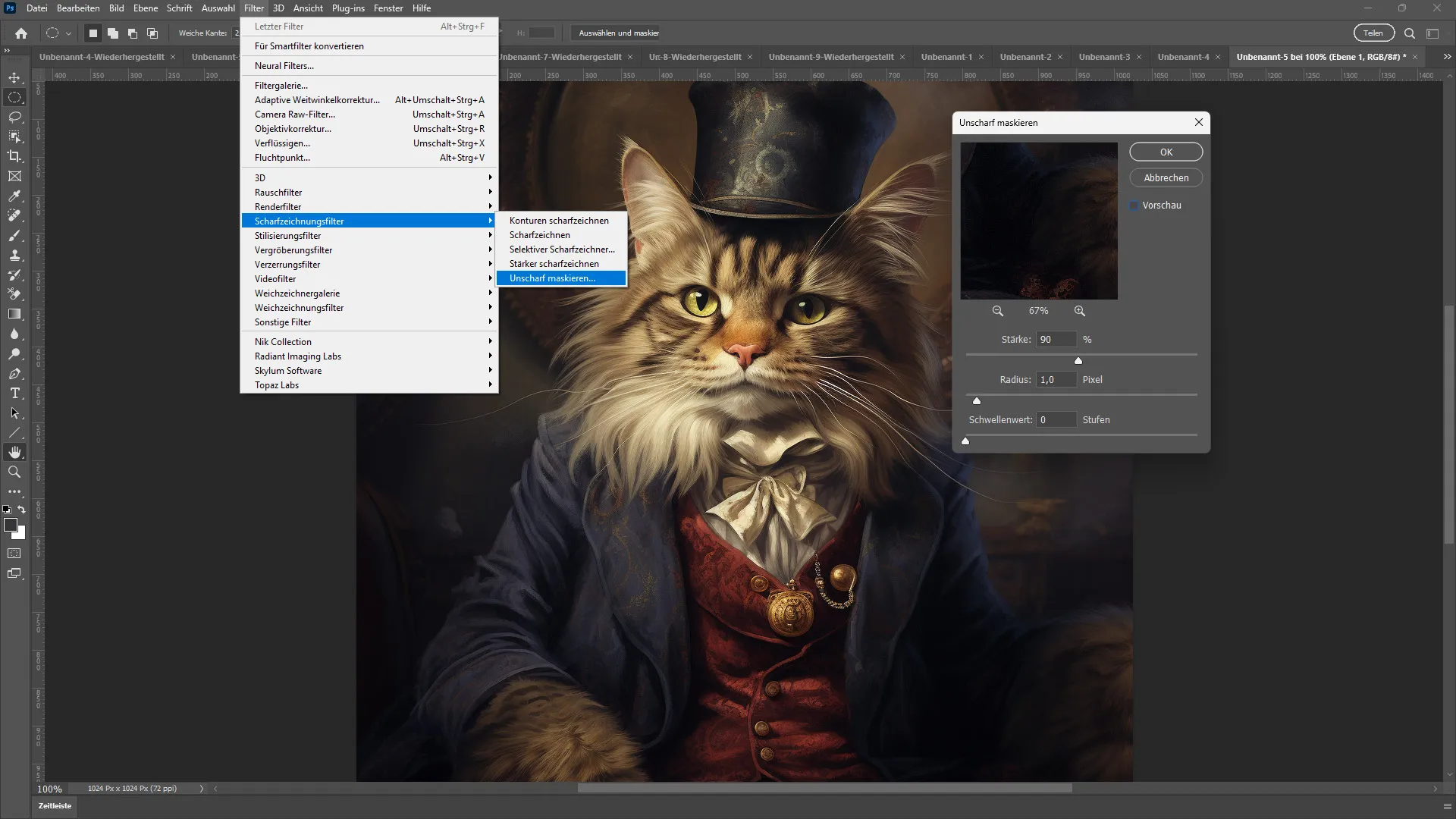
To sharpen an image in Photoshop, you can use the filter menu and select the "Sharpen" filter. It is important not to apply too much sharpening as this can result in an unnatural look. Another option is to increase the sharpness manually with the blur tool. For slightly blurred images, the result is quite good. I sometimes sharpen images that already look relatively sharp, but then they just look even crisper.
In Lightroom, you can use the sharpness slider to sharpen images. It is also possible to use the detail slider to increase the sharpness in certain areas of the image. I also like to create a preset for this and then apply it to all the images I have from a photo session, for example.
Using online tools
There are also a number of online tools that can be used to sharpen images. One example of this is the image sharpening tool from Fotor. This tool uses artificial intelligence to automatically analyze and sharpen images. It is also possible to adjust the sharpness manually using the sliders.
Another online tool is the VanceAI Image Sharpener. This tool offers both a desktop version and an online tool with which images can be sharpened automatically. It is also possible to adjust the sharpness manually using the sliders.
It is important to note that using online tools may not provide the same quality as using image editing software. It is also important to ensure that the use of online tools is safe and that no personal information is revealed.
Image sharpening with AI: an overview
AI technology has made enormous progress in recent years and is also being used more and more frequently in image processing. One of the most important applications of AI in image processing is image sharpening. In this section, I will give an overview of how AI works in image sharpening and the benefits it offers.
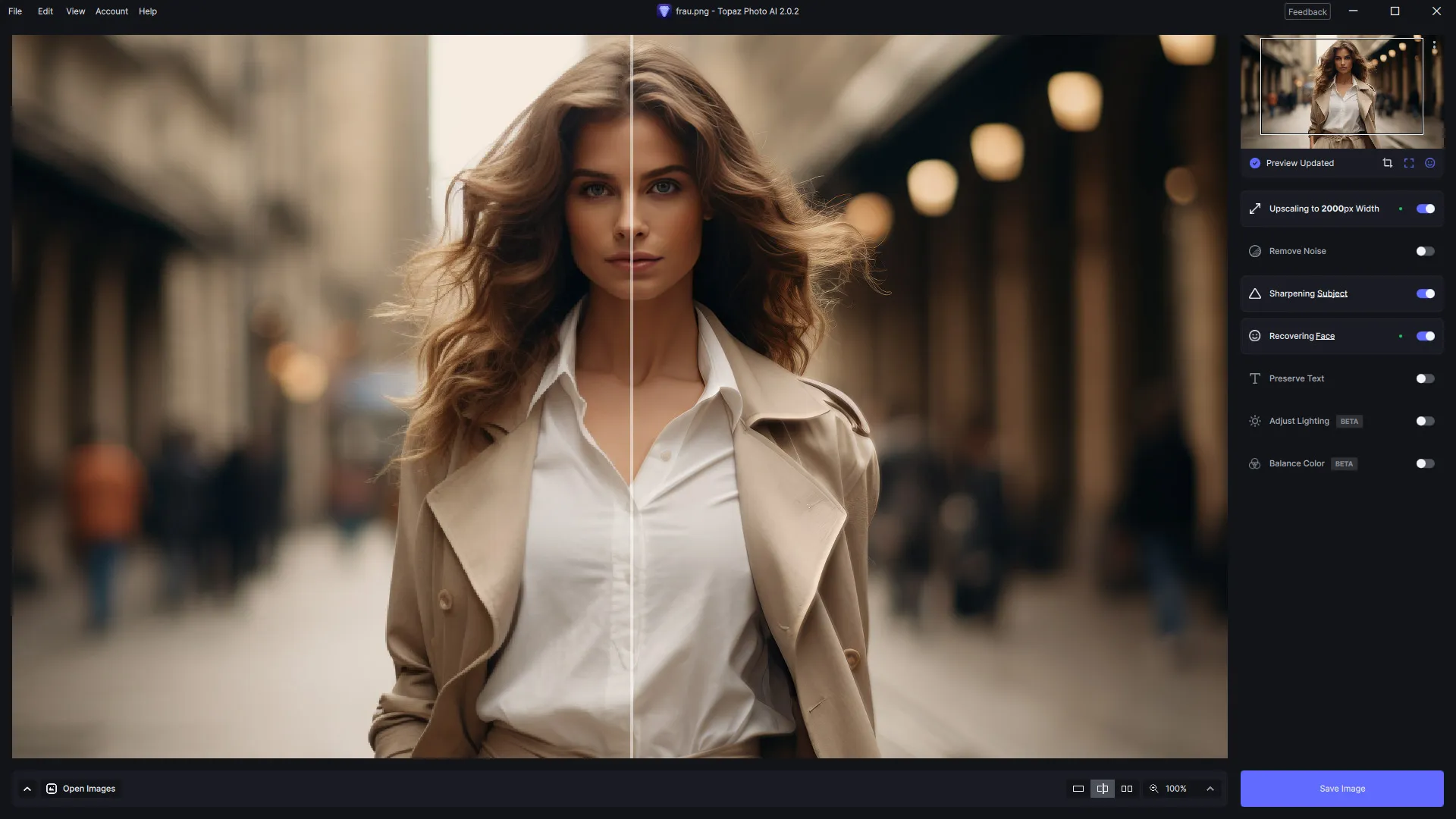
How does AI work with image sharpening?
AI-based image sharpening algorithms work on the basis of neural networks that have been trained on large data sets of images. These networks can learn what sharp images should look like by comparing and analyzing a large number of blurred and sharp images. When a blurred image is fed into the algorithm, the algorithm can recognize the blur and automatically perform sharpening to get the image sharper.
There are various AI-based image sharpening algorithms available in the market. Some of the most popular algorithms are Topaz Sharpen AI, Vance AI Image Sharpener and Luminar AI. These algorithms use different approaches and technologies to sharpen images, but all are based on the use of neural networks.
Advantages of AI image sharpening
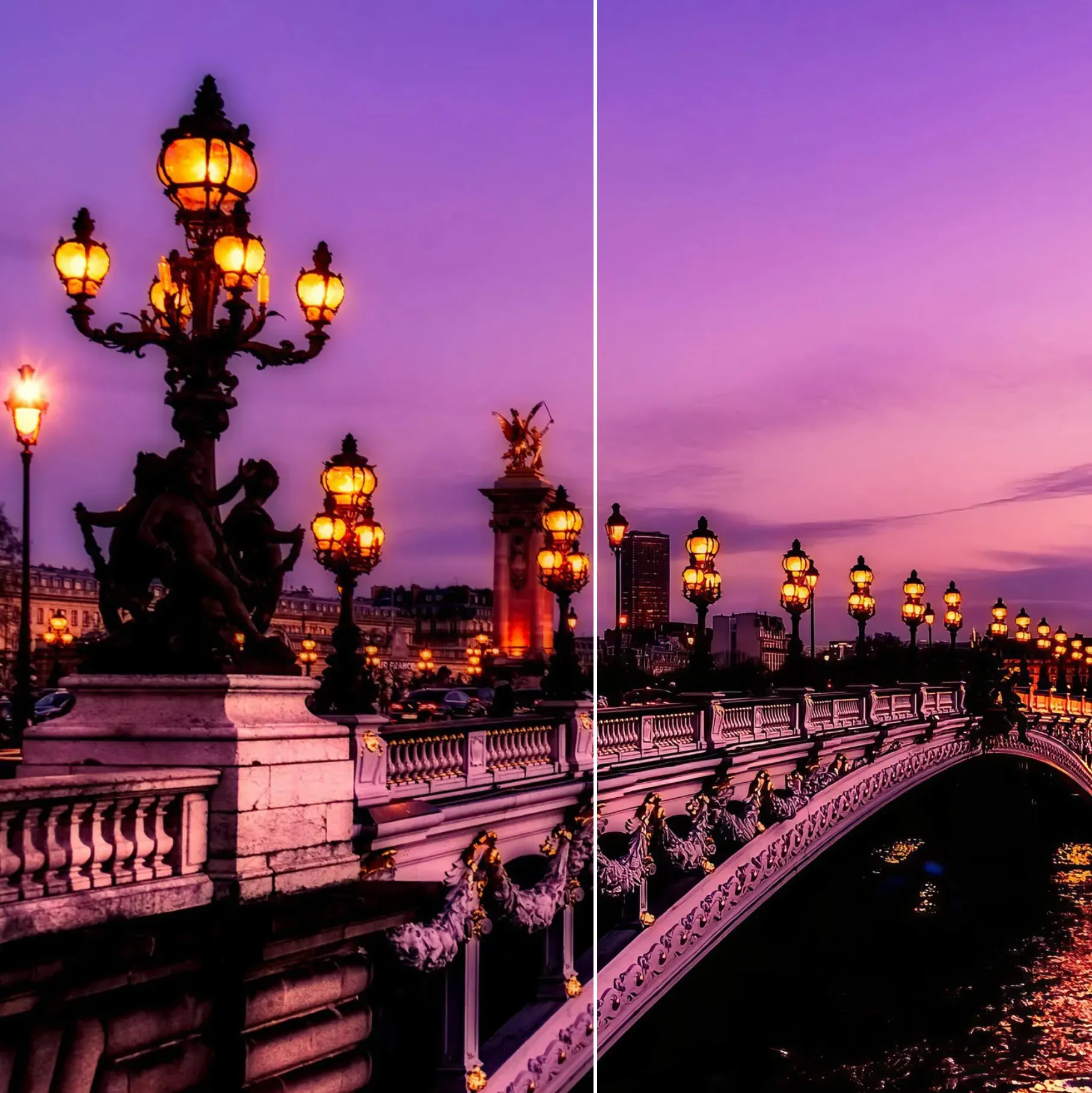
The use of AI in image sharpening offers several advantages over conventional methods. Some of the most important advantages are:
- Better results: AI-based image sharpening algorithms can usually deliver better results than conventional methods. They can better detect blur and apply more complex sharpening algorithms to enhance images.
- Time saving: Using AI-based image sharpening algorithms can also save time as they can work faster than conventional methods. This is especially useful when you need to sharpen a lot of images.
- Ease of use: AI-based image sharpening algorithms are usually very user-friendly and do not require extensive experience in image processing. They can simply be applied to the image to enhance it.
Overall, the use of AI in image sharpening offers many advantages over traditional methods. However, it is important to note that AI-based image sharpening algorithms are not always the best choice and that in some cases it may be better to use conventional methods.
Comparison: AI vs non-AI methods
Efficiency
AI methods for image sharpening are generally faster than non-AI methods. When using non-AI methods, you may need to perform several steps to achieve the desired result. AI methods, on the other hand, usually only require one step to sharpen the image. Some AI methods can even sharpen multiple images simultaneously, which further increases efficiency.
Quality of the results
The quality of the results depends on the method used. AI methods can achieve better results than non-AI methods in some cases. Especially when it comes to sharpening fine details in an image, an AI method may be the better choice. Some AI methods can also reduce distortions and artifacts that can occur when using non-AI methods.
However, non-AI methods can also achieve good results in some cases. In particular, when it comes to correcting gross blurring in an image, non-AI methods can be a good choice. Some non-AI methods can also achieve better results than AI methods when it comes to correcting color distortions or reducing noise in an image.
Overall, the choice of method depends on various factors, such as the source material, the desired result and the available resources. It can be helpful to try out different methods to find the one that best suits the requirements.
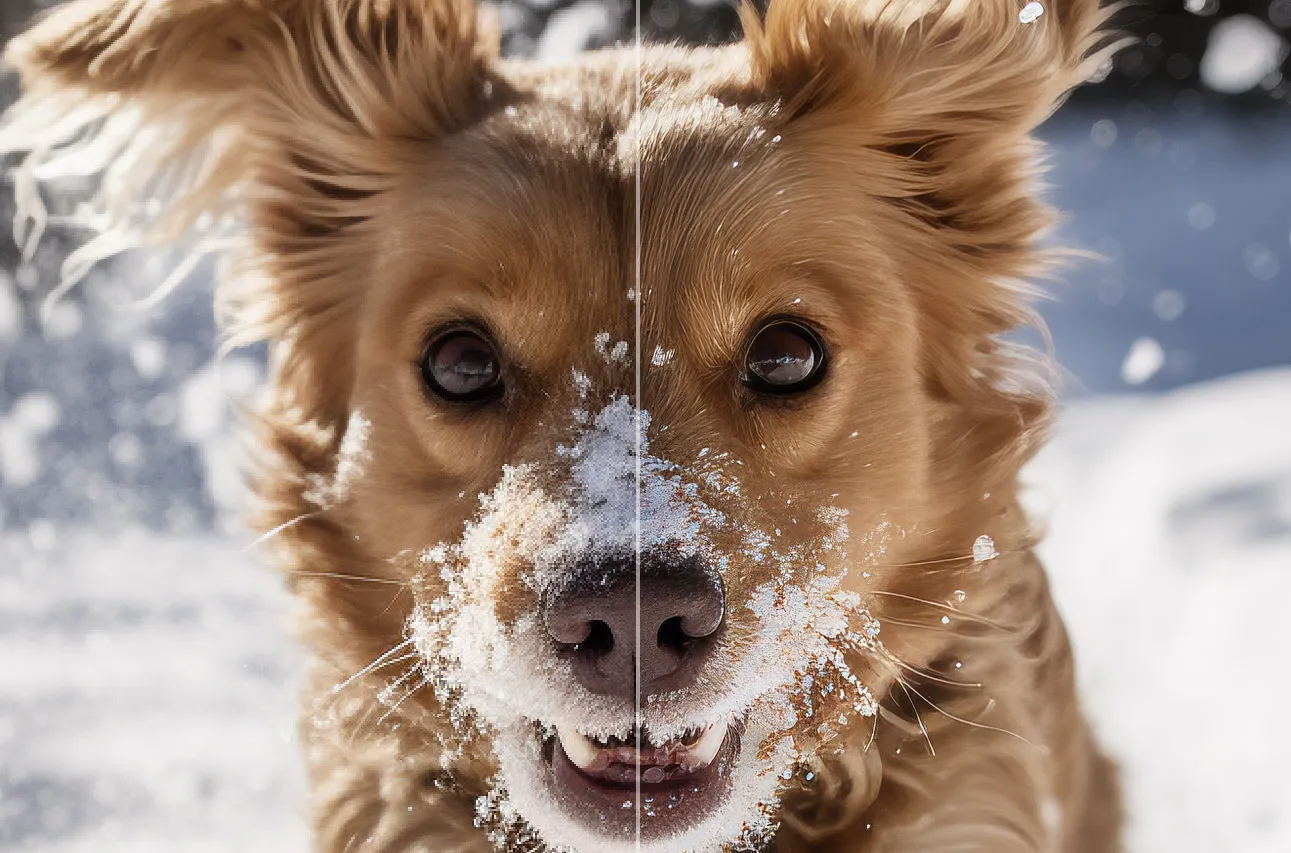
Conclusions and future prospects
Image sharpening is an important step in improving image quality, especially for pixelated and blurry images. In this article, I have presented various techniques and programs that you can use to sharpen your images, both with and without AI.
The use of AI in image sharpening has made significant progress in recent years and offers a fast and effective way to sharpen images. Programs such as Photo AI by Topaz use artificial intelligence to automatically analyze and sharpen (and denoise + rescale) images, producing impressive results.
However, it should be noted that using AI is not always the best option. In some cases, there may be unwanted noise or artifacts that can affect the image. In such cases, it is advisable to resort to manual techniques to achieve the desired result. However, I now use Photo AI from Topaz almost exclusively for sharpening (although the program costs almost €200).
In the future, image sharpening technology is expected to improve even further. It is to be expected that the use of AI in image sharpening will become even more precise and effective and that new technologies will be developed to achieve even better results.
Overall, image sharpening is an important step in improving image quality and there are many different techniques and programs available to achieve this goal. Although there are many benefits to using AI in image sharpening, it is important to also master manual techniques to achieve the best possible result.
Already like these tips? Then you'll really like my training: Sharpening images with & without AI - against pixelated, blurry photos. Check it out now.
